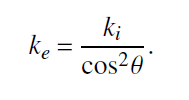Accurate Calibration of Atomic Force Microscope Cantilever Spring Constants using Laser Doppler Vibrometry
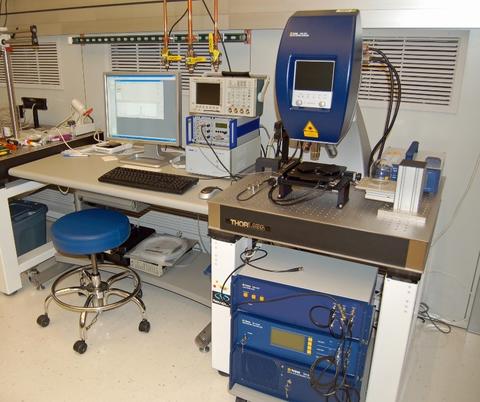
The application of atomic force microscopy (AFM) to go beyond topographic imaging and accurately measure nanomechanical properties of materials often depends on being able to accurately calibrate the stiffness of the cantilevers used. There are techniques available to provide these calibrations in the field but their uncertainties are often in the double digits (i.e., ± 10% - 30%) with unknown accuracy through Système International d'Unités (SI) traceability. The laser Doppler vibrometer (LDV) microscope instrument in the Nanomechanical Properties Group has been optimized to provide very accurate measurements with uncertainties closer to ± 1% - 2% as well as a long pedigree of linkage to the SI through through comparison cantilever stiffness measurements using the NIST electrostatic force balance (EFB).
The LDV system used for calibrating the spring constants of AFM cantilevers is housed 12 m underground in the Nanomechanical Properties Group’s clean room lab in the Advanced Measurement Laboratory (AML) at NIST. The lab affords a clean, low vibration environment with excellent temperature and humidity control. The LDV is additionally vibration isolated through an air table. The instrument itself consists of a dual beam (sample and reference laser spots) microscope with the capability to measure a frequency spectrum for a cantilever with sub-picometer deflection sensitivity. By measuring the vibrational spectrum under pure thermal excitation, the equipartition theorem can be invoked and used to estimate the stiffness of the cantilever by measuring the area under the resonance frequency peak of the vibrational spectrum.
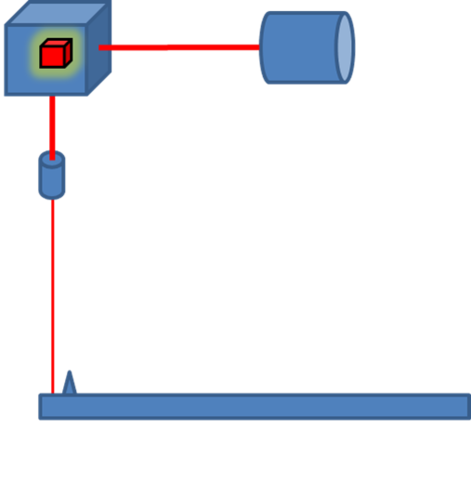
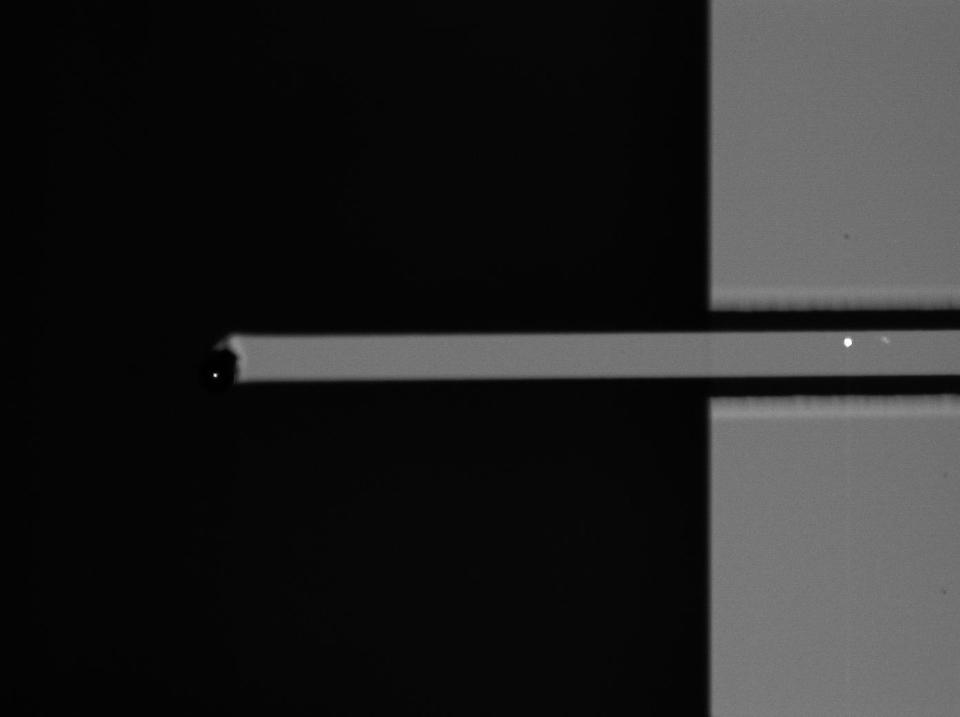
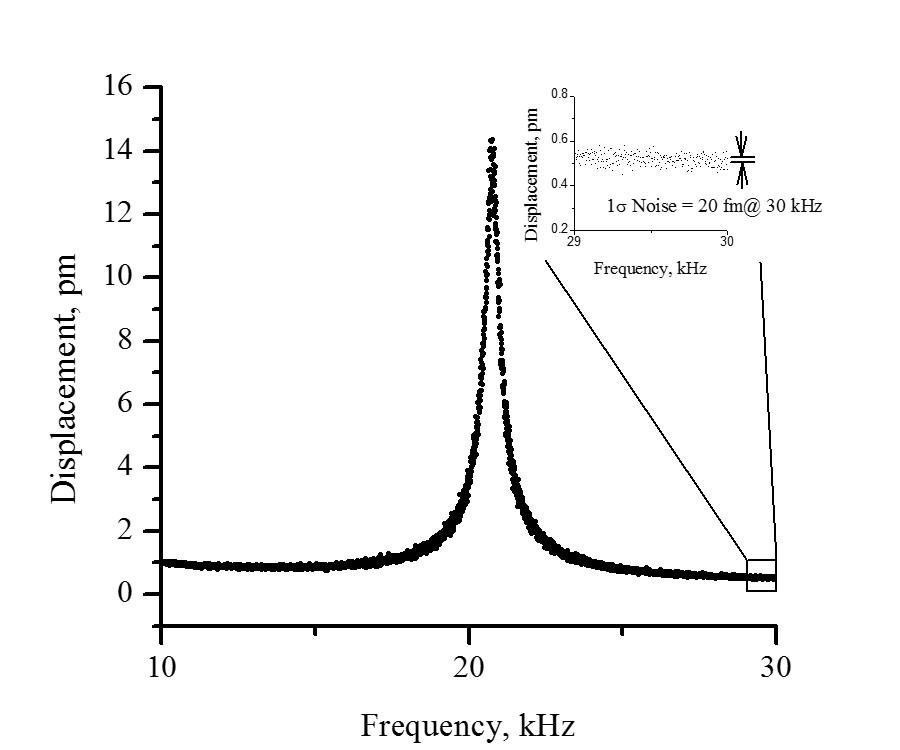
The utility of the NIST implementation of the LDV Thermal method has evolved over many years as refinements were made to tailor the measurements to specific cantilevers. It was first demonstrated for ideal rectangular cantilevers (1), then triangular cantilevers, and tipped cantilevers (2) and even colloid probe cantilevers which have spheres attached (3). A significant breakthrough in accurately measuring the stiffness of non-ideal (i.e., nor rectangular and tipped) cantilevers was achieved in 2013 with the discovery of an experimental means of measuring the mode correction factor which is needed to convert the dynamic stiffness (measured by the LDV) to the static stiffness needed for static force measurements in the AFM. As a result, the technique, as implemented at NIST, has achieved superb accuracy as demonstrated by comparison of cantilever calibration values to an SI traceable independent measurement using the NIST Electrostatic Force Balance (EFB). Over the years, LDV and EFB measurements have been compared on over a dozen cantilevers spanning three decades of stiffness (nominally 0.01 N/m through 10 N/m) with discrepancies averaging about a percent.
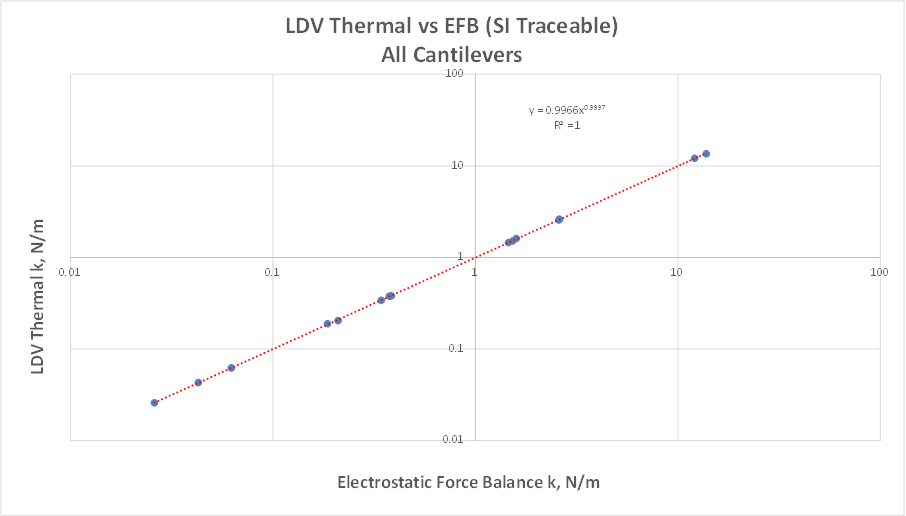
AFM cantilevers are inclined while they interrogate a surface and this angle will increase the forces applied to the surface. Most recently, the NIST LDV Thermal method was used to experimentally confirm the form of the cantilever stiffness tilt correction as:
where ke is the effective stiffness of a cantilever, ki is the intrinsic stiffness of a cantilever and Θ is the inclined angle of the cantilever (4).
The LDV Thermal calibration method has also been used to calibrate the stiffness of a new NIST SRM (3461 – Standard Reference Cantilevers for AFM Spring Constant Calibration). As of January 2023, devices have been successfully microfabricated and certified for stiffness (5) and are available for purchase at the NIST SRM store here.
Related Publications
- R. S. Gates & J. R. Pratt “Accurate and Precise Calibration of AFM Cantilever Spring Constants Using Laser Doppler Vibrometry,” Nanotechnology, 23, 375702 (2012)
- R. S. Gates, W. A. Osborn, & J. R. Pratt, “Experimental Determination of Mode Correction Factors for Thermal Method Spring Constant Calibration of AFM Cantilevers using Laser Doppler Vibrometry,” Nanotechnology, 24, 255706 (2013)
- R. S. Gates, W. A. Osborn, and G. A. Shaw, “Accurate Flexural Spring Constant Calibration of Colloid Probe Cantilevers using Scanning Laser Doppler Vibrometery," Nanotechnology 26 235704 (2015)
- R. S. Gates, “Experimental Confirmation of the Atomic Force Microscope Cantilever Stiffness Tilt Correction,” Review of Scientific Instruments, 88, 123710 (2017)
- R. S. Gates, W.A. Osborn, M. J. McLean, G.A. Shaw, and J. J. Filliben, "Certification of Standard Reference Material 3461 - Reference Cantilevers for AFM Spring Constant Calibration," NIST Special Publication 260, NIST SP 260-227 (2022) https://doi.org/10.6028/NIST.SP.260-227
Contacts
LDV Microscopy
-
(301) 975-3677
-
(301) 975-5657


